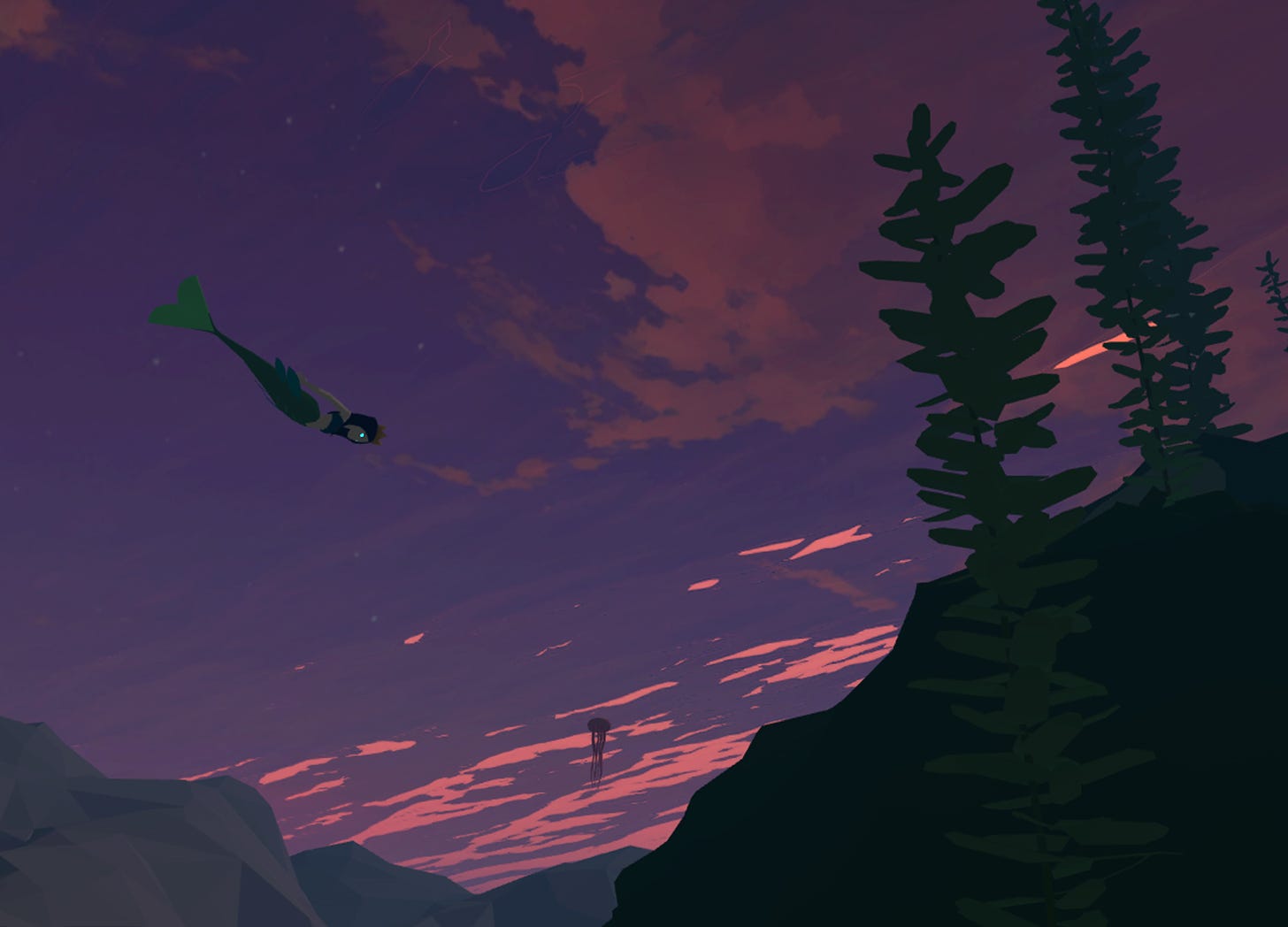Someone recently told me that after watching my behind-the-scenes footage, she hadn’t realized just how much work went into Mermaid Song. 'I’m even more impressed now than when I first experienced it,' she said.
Can I blame her? Many of us are quick to dismiss the skill and craftsmanship that goes into something (art or otherwise) while scrolling social media. It doesn’t matter exactly how it’s consumed either. Everything looks deceivingly easy. Within seconds, you can move from an exquisite ballet dancer to a child prodigy on the piano. It catches our eye, excites our ears, but still, we move our fingers along the screen, completely ignorant of how long it takes to perfect that performance.
Does it matter how much time or struggle it took once the viewer has formed an opinion? After all, art is in the eye of the beholder, or so the saying goes.
In an age of AI, the fear of being unnoticed and devalued is increasingly overshadowed by a new one—the complete loss of human creativity and expression.
My Journey Through Art
It’s been a bumpy ride along my winding repertoire, so let’s pick it up from the pandemic. Sitting in the comfort of my corporate marketing job, I questioned why I had dedicated myself to art pursuits instead of a family. That and I felt like I was dying in the office. At the time I was drawn to tech, in particular coding, because I thought it would solve my latest existential crisis. The code works, or it doesn’t. Simple, right? Having that definitive answer to my problems was an appealing resolution. Projection mapping looked cool, so I dabbled in TouchDesigner and Python after work. This led me to soon discover that VR had become accessible, which drew me back into my idealistic artist’s mindset.
Why virtual reality?
VR is like stepping into a dream and trying to figure out what it means.
Not sure if this is an exact quote, but David Lynch said something like, “My movies are film-paintings—moving portraits captured on celluloid. I'll layer that with sound to create a unique mood—like if the Mona Lisa opened her mouth, and there would be a wind, and she'd turn back and smile. It would be strange and beautiful.” Lynch’s ethos resonates with me as I experiment with storytelling in VR. Mood is a huge focus for me too, and each time I enter VR, it feels as if I’m being dropped into a film or lucid dream. I still have so much to learn about how to make a good story in VR and that’s one reason I’m here.
I’ve been studying classic literature and film, as well as folk tales, and thinking about what makes those universal and timeless. What makes something a classic? What is worth remembering?
Exploring the Classics in a Digital Age
I thought Substack would be a great place to learn more about crafting a great story since this is where writers like to hang out. It might also be a good place to share my creative process in a deeper way. And if I want to answer the question, What makes a classic? then I must learn from what others see and why.
Another reason I’m here is to be an encouraging voice for those who’ve given up, who’ve had their artistic self die—perhaps not for the first time. I understand. There is no way for me to convince you that creating or even appreciating art is worth it. But I still value human-made art and am exploring this through VR as an art form—and in the process, hope to discover what makes something timeless. An added benefit? It might also highlight the value of VR itself.
Currently, I’m developing a VR story app that will house a collection of my short stories. Shadow Mend and Mermaid Song will be the first books you can take off the virtual shelf to experience. They are dreamlike and ask questions to reflect on.
I love asking questions. Are we here on this Earth simply to pass time and none of this really matters? If so, I say: do what brings you joy. Right now, VR makes me happy, and at the very least I can share that with you.
Who is Flutter?
This wouldn’t be a proper introduction if I didn’t tell you more about my name. Flutter is a nickname I’ve had for years. It was what I called my first demo tape and used for my first show as a solo artist in Oshkosh at a coffee house. At that intimate event, the singer from the headlining band said it should be my nickname, and my music peers quickly started calling me Flutter.
I almost thought about retiring it. These days I often get confused with the software of the same name, which I never heard of until I started getting inquiries.
But I’m keeping it.
“Flutter” is a name that’s followed me through many chapters in life. Whether it be music, roller derby, or now VR, it’s been a thread connecting me to the people and places that shaped my life and art.
And that’s why I’m here, to continue finding those connections. Before I become a reclusive forest-dweller for good, I think I’ll give this art thing another try. Will you join me?
Sign up now.
And invite your friends!




